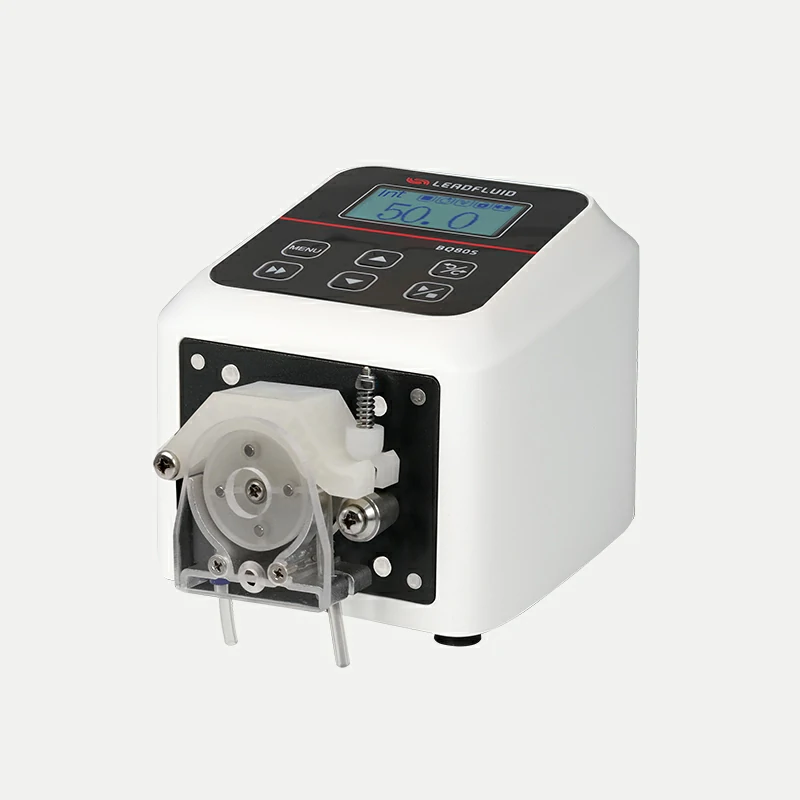Introduction
Large flow peristaltic pumps are essential equipment used in various industries for their ability to handle high volumes of fluids efficiently and accurately. These pumps utilize a unique operating principle that distinguishes them from other pumping technologies. In this article, we will explore how large flow peristaltic pumps work and discuss their advantages in different applications.
Operating Principle of Large Flow Peristaltic Pumps
Large flow peristaltic pumps operate based on the principle of peristalsis, which imitates the natural movement of muscles in the human body. The key components of a peristaltic pump include a pump head, a flexible tubing, and rollers or shoes.
- Pump Head: The pump head houses the rollers or shoes and provides a housing for the tubing. It is designed to hold the tubing securely and apply pressure to the fluid-containing tube.
- Flexible Tubing: The flexible tubing is the main conduit through which the fluid flows. It is typically made of elastomeric materials such as natural rubber, silicone, or thermoplastic elastomers (TPE). The tubing is positioned within the pump head and undergoes compression and relaxation during operation.
- Rollers or Shoes: The rollers or shoes are located within the pump head and come into contact with the flexible tubing. Their function is to compress the tubing against a surface, occluding it and creating a positive displacement effect. The rollers or shoes rotate or move along the tubing, squeezing it and propelling the fluid in the desired direction.
Working Process
The working process of a large flow peristaltic pump can be summarized in the following steps:
- Tube Loading: The flexible tubing is inserted into the pump head and positioned securely. The tubing is sized to fit the pump head and ensures a tight connection to prevent leakage.
- Occlusion and Compression: As the pump is activated, the rollers or shoes start rotating or moving along the tubing. They exert pressure on the tubing, compressing it against a solid surface such as the pump head or a guide rail. This occlusion effectively seals off a section of the tubing, preventing fluid from flowing backward.
- Fluid Propulsion: As the rollers or shoes continue to move, the occluded section of the tubing moves forward, pushing the fluid ahead of it. The occlusion and compression create a positive displacement effect, ensuring accurate and consistent fluid transfer.
- Tubing Release and Refilling: Once the occluded section of the tubing moves past the rollers or shoes, it relaxes and returns to its original shape. This relaxation allows the tubing to refill with fluid from the inlet, preparing for the next compression and propulsion cycle.
Advantages of Large Flow Peristaltic Pumps
Large flow peristaltic pumps offer several advantages that make them suitable for various applications:
- Gentle Fluid Handling: Peristaltic pumps provide gentle fluid handling, making them ideal for delicate or shear-sensitive materials. The fluid only comes into contact with the tubing, eliminating the risk of contamination or damage.
- High Accuracy and Repeatability: The positive displacement nature of peristaltic pumps ensures high accuracy in fluid transfer. The volume of fluid displaced is directly proportional to the number of occlusions and the distance covered by the tubing, allowing for precise control and repeatable results.
- Versatility: Large flow peristaltic pumps can handle a wide range of fluids, including corrosive, viscous, abrasive, and high-solid-content liquids. The choice of tubing material enables compatibility with different chemicals and applications.
- Easy Maintenance and Cleanliness: Peristaltic pumps have a simple design with minimal moving parts, making them easy to maintain. The tubing can be quickly replaced, reducing downtime and ensuring hygienic operations.
- Self-Priming Capability: Peristaltic pumps are self-priming, meaning they can draw fluid into the tubing without the need for additional priming mechanisms. This feature simplifies the setup and operation process.
Conclusion
Large flow peristaltic pumps operate based on the principle of peristalsis, utilizing the compression and relaxation of a flexible tubing to propel fluids. Their unique design and operating principle offer advantages such as gentle fluid handling, high accuracy, versatility, easy maintenance, high flow peristaltic pump and self-priming capability. These pumps find applications in industries such as pharmaceuticals, food and beverage, water treatment, and more. By understanding how large flow peristaltic pumps work, engineers and system designers can make informed decisions when selecting and utilizing these pumps for their specific fluid transfer needs.

